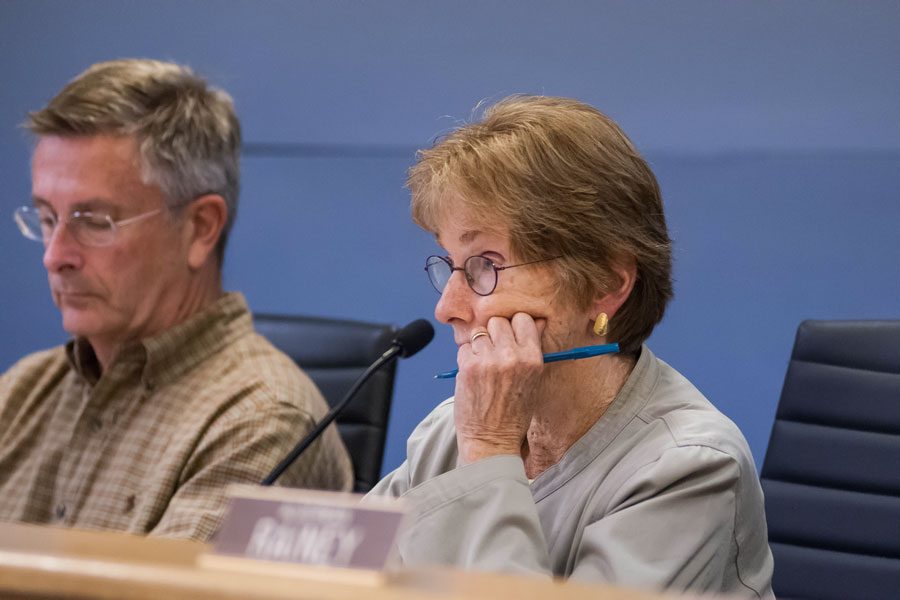Residents, officials discuss proposed nature park at ward meeting
Lauren Duquette/Daily Senior Staffer
Ald. Eleanor Revelle (7th) speaks at a city meeting. Revelle led the 7th ward meeting Thursday, when some residents expressed concerns about the possible creation of a nature park near the Evanston-Wilmette border.
November 4, 2016
Evanston residents voiced concerns about a proposed nature park at a 7th Ward meeting Thursday, with some saying creating the park on the border between Wilmette and Evanston would hurt existing trees.
Ald. Eleanor Revelle (7th) led the meeting and said the park, which would include butterfly gardens, could disrupt the existing ecosystem.
The plans for the nature park were presented at the meeting by Joe Keefe, a Winnetka resident. The Keefe family owns Fairway Oaks, a 1.1-acre area of undeveloped wetland. The family wants to build a road to make the property accessible and appealing to buyers.
The road would run through land leased by Evanston from the Metropolitan Water Reclamation District, so the Keefe family is petitioning the city for permission to build on the land. The Keefe family also proposed building a nature park along the road, which would remove invasive species and replant native species, particularly oak trees.
“Re-habitation of overlooked land, move invasive species, replace with sensitive and sensible development…and the Cubs will win the World Series (next year) if you let us build here,” Keefe said when presenting the plan.
But Revelle said the plan would disrupt the local ecosystem, and the young trees that would be planted wouldn’t be an adequate replacement for the older trees that the plan removes.
“It’s an area with a really large number of mature trees, trees that really provide good habitat and food for birds and wildlife,” Revelle told The Daily.
Revelle polled the attendees to see if they would prefer the proposed nature park or if the property would be more beneficial if it remained a wetland. The majority of residents voted in favor of leaving the land as is. Ultimately, the decision on whether or not to approve the plan will be up to the city.
Keefe presented the plans for the nature park from an ecological assessment and restoration plan prepared by Ecology + Vision LLC. The wetland is not actually healthy in its current state, according to the assessment, because it was not always a wetland, but has become one as an unintended effect of nearby construction projects. Now, native plants in the area don’t flourish, and invasive species grow out of control.
Paul D’Agostino, Evanston’s environmental services bureau chief, and he said the plan is in accordance with Evanston’s laws regarding cutting and planting trees. The plan would plant more trees than it would remove, he added.
“If this plan were to go through, they would be required to place the trees by a certain percentage depending on what species were removed,” D’Agostino said.
Email: [email protected]


